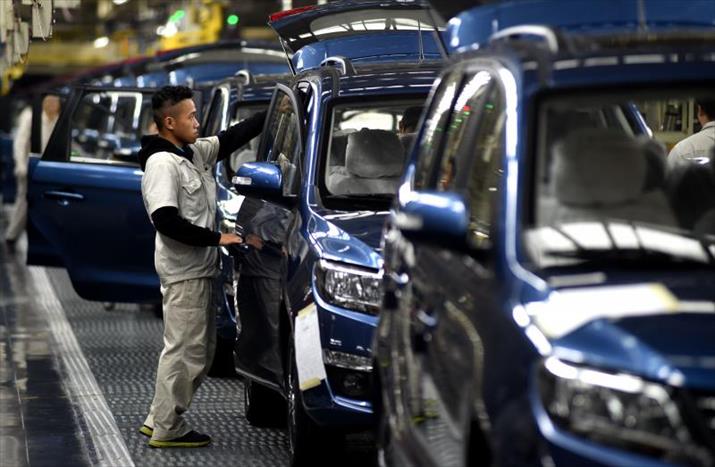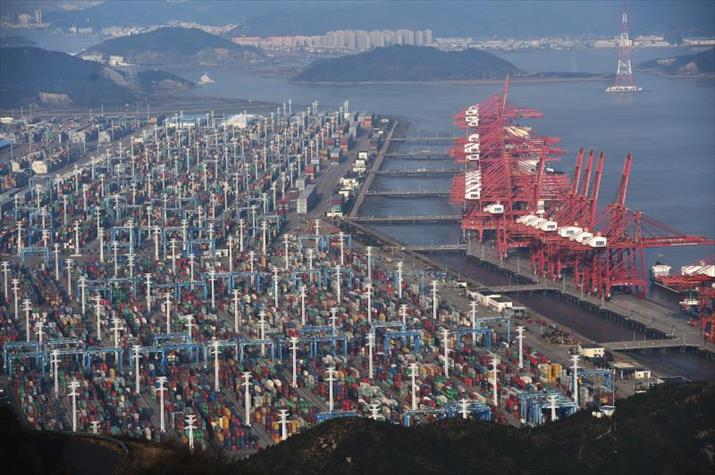| Business |
| China's Gift to the World | |
| Japanese economist on China's economic endeavors | |
|
|
 Workers examine cars on a production line of the Dongfeng Liuzhou Motor Co. Ltd. in Liuzhou, Guangxi Zhuang Autonomous Region, on November 10, 2015 (XINHUA)
The world economy has been sluggish since the global financial crisis broke out in 2008. Against this backdrop, however, the Chinese economy has maintained medium to high-speed growth, fueling the recovery of the global economy. Therefore, the international community has become increasingly concerned about the latest trends in the Chinese economy. This year's sessions of the National People's Congress (NPC) and the National Committee of the Chinese People's Political Consultative Conference (CPPCC), commonly called the Two Sessions, has attracted more and more international attention since they serve as a weather vane for the Chinese economy. As for the Two Sessions, I am particularly concerned about the development of the Chinese economy and plans for the Silk Road Economic Belt and 21st-Century Maritime Silk Road Initiative (Belt and Road Initiative). Steady real economy In 2016 China's GDP grew by 6.7 percent, the lowest in recent years—the figure is slightly lower than 2015's growth rate of 6.9 percent. However, we must evaluate these numbers in the right context. First, I think the 6.7-percent growth rate is an accurate reflection of China's real economy in 2016. The Chinese economy had maintained higher GDP growth in previous years, but that was partly due to the effect of some economic bubbles. For instance, to pursue high GDP growth rates, many local governments in China built large numbers of buildings, hoping to push up economic growth through real estate development. But if that industry becomes excessively heated as a result of massive investment, it will result in too many unsold buildings forming risk-laden economic bubbles. Chinese President Xi Jinping vowed to carry out supply-side structural reform at the 11th meeting of the Central Leading Group on Financial and Economic Affairs held on January 27, 2016. This indicates that China's top leadership has recognized the risks behind economic bubbles, surplus capacity and an unreasonable industrial structure. The GDP growth in 2016 was closely related to reforms on the supply side. Take the human body as a metaphor. Exercise can help an overweight person reduce excess fat and develop firm muscles. The Chinese economy is undergoing a similar fitness process. The supply-side reform is tasked with burning surplus capacity and economic bubbles as if they were excess fat. The 6.7-percent growth reflects solid improvement in the real economy following achievements made in the supply-side reform. Second, the world GDP grew by around 3 percent in 2016, while China's growth was more than double that figure. From that, one can conclude that the Chinese economy plays a powerful role in supporting global economic recovery. President Xi said at the Central Economic Work Conference on December 16, 2016 that the supply-side structural reform will be intensified in 2017. Premier Li Keqiang's Government Work Report delivered at this year's Two Sessions also listed measures to bolster the reform. Reforming the supply side is not just China's task, but also a worldwide challenge. Whether China, the world's second largest economy, is able to sustain steady growth will be of great significance to the world economy. Therefore the entire world is paying close attention to the results of China's actions. The Chinese economy is confronted with difficulties such as surplus capacity, large amounts of unsold homes and high debt ratios. To solve those problems, the Chinese Government has prescribed cutting overcapacity, reducing inventory, deleveraging, lowering corporate costs and strengthening areas of weakness. But an obstacle to accomplishing those goals lies in how to boost structural reform and industrial upgrading while ensuring sound and stable economic growth. This is similar to the difficulties an overweight person faces when attempting to lose weight and at the same time develop firm muscles. The supply-side structural reform offers an appropriate fitness plan. However, such plans take time to produce the desired result. This year is the second year of the 13th Five-Year Plan (2016-20), in which reforms on the supply side are an important pillar. We should observe the effects of the plan on a long-term basis.  The Zhoushan Port in Ningbo, east China's Zhejiang Province. The port aims to become a transportation hub connecting China and countries along the Belt and Road routes. In 2016, container throughput with those countries accounted for 40 percent of the total. (XINHUA)
International capacity cooperation The First Belt and Road Forum for International Cooperation will be held in Beijing in May this year. Since President Xi proposed the Belt and Road Initiative in 2013, more than 100 countries and regions throughout the world have responded positively to it. The Belt and Road Initiative was another hot topic for this year's Two Sessions, in addition to the supply-side reform. Regarding the initiative, I'd like to discuss the possibility for international industrial capacity cooperation between Japan and China. In recent years, the media has often reported on Japanese companies that have withdrawn from or reduced their investment in China. At present the growth rate of Japanese investment in China is not satisfactory, but this doesn't mean that Japanese companies regard China's market environment negatively. It's because the conditions for Japanese companies to invest in China are changing—China's advantages in low labor costs and low raw material transportation costs no longer exist, and Japanese investment in China has therefore entered a period of adjustment. The Belt and Road Initiative will help China become a base for international industrial capacity cooperation, bringing new opportunities for Japanese companies that have been investing in China. During the nearly four decades of reform and opening up, China has attracted a large amount of investment from foreign businesses, many of which are from Japan. Now China's annual investment in foreign countries surpasses the amount it attracts from abroad, making it a net capital exporting nation. The Chinese economy will become increasingly international in the future. I suggest Chinese enterprises and foreign-invested enterprises in China join hands to export industrial capacity and capital to third-party states through the integration of funds, technology and management. Third-party states include all the countries along the Belt and Road routes. Such an unprecedented model of international industrial capacity cooperation will bring infinite opportunities and new growth points. I am particularly optimistic about the future of Sino-Japanese cooperation under such a model. As evidenced in U.S. President Donald Trump's rhetoric and in other recent events such as the UK's exit from the European Union, populism and trade protectionism are gaining momentum, adding more uncertainties to the global economic recovery. The global governance system led by Europe and the United States no longer works. Europe has therefore cast its eyes to the East, especially to the China-proposed Belt and Road Initiative, which is likely become the starting point for a new global governance system. With both the supply-side reform targeting domestic problems and the Belt and Road Initiative aiming for global cooperation, I believe in 2017 China will embrace great opportunities to create a new era. Copyedited by Bryan Michael Galvan Comments to zhouxiaoyan@bjreview.com |
|
||||||||||||||||||||||||||||||
|
